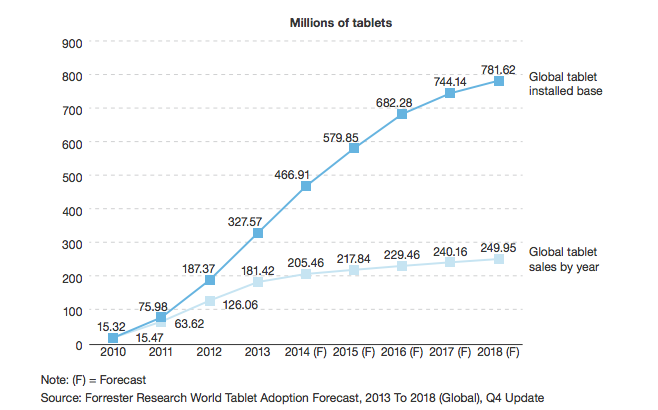Worldwide tablet sales slowed down in recent years and have now hit a plateau, according to a new study from research firm Forrester Research. The increasing popularity of the phablet, a low tablet replacement rate and saturation in the consumer tablet market are thought to be the main reasons behind the slump in sales.
Worldwide tablet sales were at their peak between 2010 and 2013, increasing from around 15 million units to 327 million. However, the report highlights the fact that the replacement rate of tablets isn't as high as smartphones, as people tend to use the same device for a long period of time. As a result, tablet sales are expected to decline to less than 50 million units over the next four years.
The popularity of phablets is also attributed to the drop in tablet sales, as an increasing number of consumers use these devices as a substitute for the bulkier tablets. The report states that around 41 percent of global information workers said their primary smartphone is 5 inches or larger, and 11 percent indicated that their primary tablet is actually a phablet.

Moreover, Forrester notes that 4.5 million Galaxy Note 4 units were shifted in its first month, while Samsung's tablet sales fell by 5 percent in the second quarter. The popularity of other phablets such as the iPhone 6 Plus and Microsoft's Lumia 1520 also played a part in declining consumer tablet sales last year.
The report points out that tablets are becoming increasingly critical for business use. Forrester's data indicates that around 29 percent of businesses provide tablets for use at work, and more than half of employees use a tablet for work purposes at least once a week.
Despite the slowdown in sales, the global tablet install base is still expected to rise to a substantial 800 million consumers by 2018 and should reach 1 billion sometime after 2020.